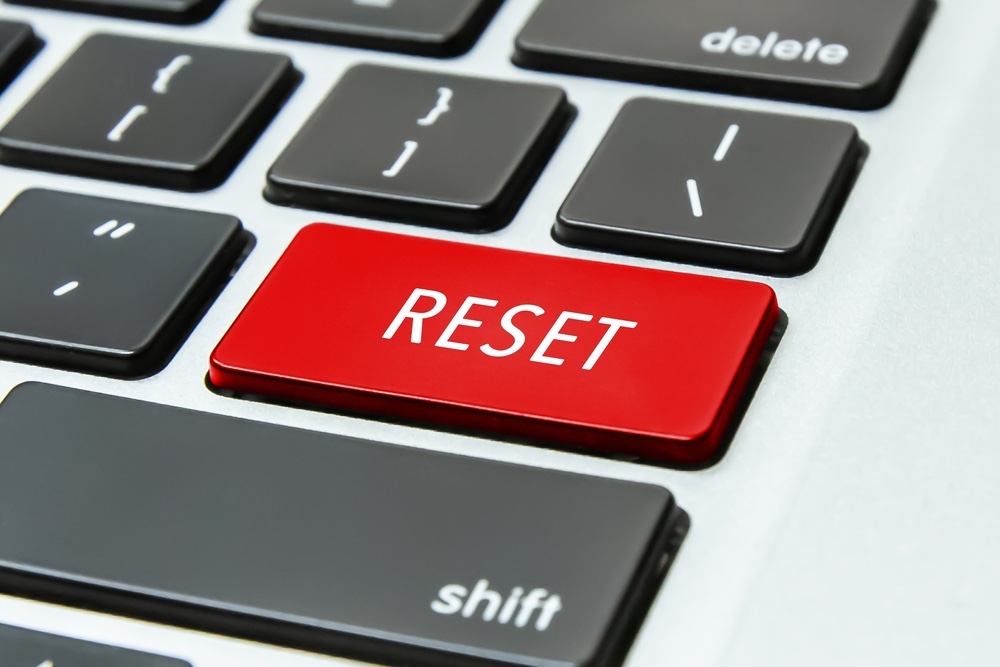Quick Summary
You’ve had a stellar year—revenues are up, morale is high, and you’re ready to expand your team. But before you start hiring, consider this: each new addition will shape your company’s future. Hiring isn’t just about filling roles; it’s about building the culture and capabilities that will drive your next phase of growth. Choose wisely, and your new hires will propel you forward. Choose poorly, and they could hinder your progress.
Takeaways
-
Success can make you sloppy – After a strong year, it’s easy to rush hiring decisions that don’t serve long-term goals.
-
Every hire shapes culture – New team members don’t just fill roles—they influence performance, morale, and company direction.
-
Hire for the future, not just today – Look beyond immediate needs and focus on who can grow with the business.
-
Use structured hiring tools – Scorecards and clear criteria help you make objective, aligned decisions—not gut calls.
You’ve had a cracking year. Revenues are up, the mood in the office is borderline euphoric, and you’re finally in a position to invest in your team. Budgets have reset, and you’ve managed to get a decent chunk of cash into the pot earmarked for new salaries. It’s growth time. But before you start handing out job offers like Glastonbury wristbands, stop and think. Because your next hires could either propel you into that 500-employee dream or quietly torpedo it from the inside.
In the early stages of scaling, every single hire matters. The people you bring on now won’t just do the work—they’ll help define how work gets done. Get it right, and they become the backbone of your future success. Get it wrong, and you’ll be left wondering why your promising rocketship of a company is sputtering before take-off.
Early hires: the five-a-side analogy
When you’re a start-up, hiring is like building a five-a-side football team. When it’s just you and a few others, everyone’s touching the ball. You can’t hide a lazy striker or a wobbly keeper. A single weak link gets exposed fast. And the best player? They’re carrying half the game on their back.
Your early hires are exactly like that. In a team of ten, every single person represents 10% of your culture, 10% of your energy, 10% of your forward momentum. You can’t afford passengers. You need hungry, curious, competent people who get stuck in, muck in, and have half an eye on where the game is going next.
Hire for where you’re going, not just where you are
Once you’ve established yourself with a decent five-a-side team and have a foothold, the strategy needs to adapt as you begin to think seriously about scaling. One of the most common mistakes I see is companies who want to grow exponentially hiring for now instead of next. Sure, you might desperately need a marketing exec or ops lead who can hit the ground running. But what about when you’ve doubled in size? Is that same person still up to the job, or are you hiring yourself a future problem? One CEO I spoke to recently said that the people they were hiring when they only had ten employees were far and away the best people they could attract. Today? They wouldn’t even make the shortlist! That may sound brutal but it’s honest. The bar moved. Not everyone kept up.
It comes back to a concept we reference a lot: having the right people in the right seats on the bus. Jim Collins, in Good to Great, nailed it with this analogy. First, get the right people on the bus. Then, get them in the right seats. Only then do you worry about where the bus is headed.
Hiring isn’t about filling gaps. It’s about shaping your future. You need people who can scale with you, not just cling on for dear life. The scrappy all-rounder who did wonders when there were ten of you might crumble when the org chart has actual departments. It doesn’t make them bad—just not the right fit for the next leg of the journey.
Culture isn’t what you write down – it’s what you hire
Forget the values poster on the kitchen wall. Your culture is who you hire, fire and promote. It’s how people behave when no one’s looking. And your early hires will set that tone.
Hire someone who cuts corners, and soon you’ll have a business full of corner-cutters. Hire someone who genuinely gives a toss, and that starts to spread. It’s why we tell our clients again and again: hiring is your culture-building tool.
Don’t settle for someone who’s just ‘good at the job’. Look for alignment. Are they excited by your mission? Will they challenge you in the right way? Do they bring energy into the room or quietly suck it out like an office space heater in August?
What’s more, are they raising the level? Increasing expectation? Either everyone you hire is better than the average of your current team or they aren’t. If they’re not, then the average quality of your team is dropping, and that’s the start of a slippery slope. One of our clients has set themselves the goal of replacing their bottom 30% with a new top 20%. Everyone they hire this year needs to be better than everyone they already have, driving the average level up considerably. It’s hard, but it’s strategically crucial.
Don’t be afraid to say goodbye
Here’s the awkward bit. Some of the people who got you to this point won’t be the ones who take you further. You know it. They know it. But no one wants to say it out loud.
Maybe it’s your first sales hire, who crushed it when the only sales enablement was you shouting encouragement from the next desk. But now you’ve got territories and teams, and suddenly they’re out of their depth. Or it’s the office manager who was brilliant at organising Friday lunches but isn’t quite cutting it as Head of Ops.😃
It’s tough. They were loyal. They were early. They probably rolled up their sleeves when times were tight. But if they’re holding your growth back, you’re doing no one any favours by letting it drag on.
We’ve seen this time and again in our work with scale-ups. In fact, I often talk about the challenge of recognising when an early hire has become the bottleneck. It’s not about being ruthless. It’s about being honest. Are they still the right person, in the right seat?
If not, have the conversation. Support them where you can. Find another seat, if one exists. But don’t compromise the whole journey out of sentimentality. Growth demands hard decisions.
The power of the reset

Sometimes, the best thing you can do for your business is stop, step back and reassess the team entirely. We’ve worked with clients who’ve hit a wall, then come to us for a two-day strategy workshop—only to realise they need a complete reset of their leadership line-up. That might sound drastic, but when the stakes are high, you can’t afford to tread water. The right team will energise your business; the wrong one will quietly drain it.
It’s often the moment when the garage-band rockstars who got you off the ground are now struggling with the demands of the stadium tour. Having the ability to bring 80,000 people in an arena to their feet is not the same thing as headlining open mic night at The Dog & Duck on a Thursday night. It was a valuable attribute at the time, but now you need different skills.
Your early hires might have had the grit and hustle to make magic in the early days—but leading a team of 50, managing complexity, and steering a scaling organisation is a different skillset. Not everyone makes that leap – and of course, not everyone wants to. There are many brilliant people out there who love working for small start-ups, free from the organisational complexities of sprawling departments. It’s not about being ‘better’ or ‘worse’ – it’s about being aligned to the business needs or not.
So take a long, honest look at your current team. Is each person doing their best work in the role they’re in? Do they still fit the needs of the business? Are they showing signs of growth—or signs of stalling? If there’s a gap, close it. If there’s a mismatch, fix it. Your people are your strategy.
Hiring with heart (and a bit of steel)
I’m not saying strip the soul out of your company and turn it into a sterile machine. Quite the opposite. The best businesses I’ve worked with care deeply about their people. But they also understand that caring means making the right decisions—for everyone.
That might mean letting go of someone who’s struggling, so they can find a role where they’ll thrive. It might mean being brutally honest during the hiring process to make sure you don’t sell someone a dream they’ll hate six months in. And it definitely means avoiding the trap of thinking “it’ll probably be fine” when your gut is already saying otherwise.
You can build a kind, ambitious, fun-to-work-at business and hold a high bar. In fact, the most enjoyable businesses to work in are often the ones where standards are high, roles are clear and the people are bloody brilliant.
How to stress-test a scaling team
Worried your team might not be fit for scale? Good. You should be. Complacency is the enemy of growth. If you want to know whether your team is ready to grow, start by imagining a few pressure scenarios.
What would happen if your best client doubled in size overnight—would the current team rise to the challenge, or collapse under the weight? If your top performer handed in their notice tomorrow, do you have a succession plan in place—or would it send shockwaves through the business? If the market shifted and you had to raise prices, who on your team would be confident enough to hold that line with customers? And more to the point—who’s asking for more responsibility, itching to take on bigger things, and who’s coasting, quietly switched off?
If any of your answers leave you feeling uneasy, it’s probably time to shake things up and have a proper look at whether your team is still fit for purpose.
Building your A-team (not the Netflix reboot)
The team that gets you from 50 to 500 won’t be built on CVs alone. It takes intentionality. Clarity. Sometimes even outside help (yes, that’s us offering to lend a hand).
Hiring your first key external exec—or even your first proper salesperson—can feel like navigating without a map. You’re bringing in someone who’s better than you at things you’re not great at (or don’t want to admit you hate). For solo founders, it can feel like re-founding the company. For co-founders, it’s like adding a third wheel. And there’s so much to think about. What’s the job scorecard? Where do you find people? How do you screen and interview them? We help with all these challenges all the time.
Look for people who:
- Want to build something, not just collect a payslip
- Show signs of self-awareness and the ability to learn
- Get excited about the future you’re building
- Don’t need babysitting, but also aren’t afraid to ask dumb questions.
And remember: one great hire can transform a business. One poor one can tank morale, performance and progress. You’ll feel the difference within weeks.
Written by business coach and leadership coaching expert Dominic Monkhouse. Contact him to schedule a call here. You can order your free copy of his book, Mind Your F**king Business here.

